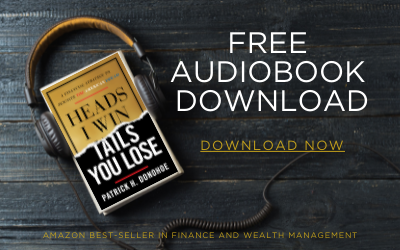For decades, the dominant narrative in personal finance has been simple: Invest early, stay in the market, and let compounding do the rest. But in recent years—especially in times of volatility and economic uncertainty—many investors have started to ask a deeper question:
Is the stock market really the only way to build wealth? Whole life insurance vs stock market better? Or are there more stable, strategic alternatives—like Whole Life Insurance?
At first glance, comparing whole life insurance vs stock market may seem like comparing apples to oranges. One is built for protection and stability; the other for growth and speculation. But when we look closer, the question becomes not “Which is better?”—but “Which better fits your goals, values, and financial timeline?”
We will break down the key differences between these two strategies—exploring how they behave, how they grow, and how they align (or conflict) with your need for liquidity, protection, legacy, and peace of mind.
1. Whole life insurance vs Stock Market – The Core Differences

When comparing Whole Life Insurance vs the stock market, it’s essential to understand that these tools serve fundamentally different purposes—yet both aim to help you build wealth. The key is knowing how they work, what they offer, and where they fit in your financial strategy.
Whole Life Insurance: Asset, Not Investment
Whole Life Insurance is often misunderstood as merely a form of protection. But when structured properly, it functions as a stable, liquid, non-correlated asset that provides:
- Guaranteed growth of cash value
- Access to liquidity through policy loans
- Dividend potential from a mutual insurance company
- Tax-free death benefit and legacy protection
It’s built for control, certainty, and compounding, not speculation. This makes it ideal for conservative investors, legacy planners, and anyone who values predictability and protection.
Stock Market Investing: Opportunity and Exposure
Investing in the market—whether through individual stocks, ETFs, or retirement accounts—offers:
- Higher long-term growth potential
- Ownership in companies and sectors
- Access to dividends and capital gains
But with these benefits come:
- Market volatility and potential loss
- Emotional stress during downturns
- No guarantees of principal or performance
- Limited control over external forces
Market investing is best for those with a high risk tolerance, a long time horizon, and the ability to emotionally weather cycles.
Key Differences at a Glance
| Feature | Whole Life Insurance | Stock Market |
| Growth Type | Guaranteed + Dividends | Market-based |
| Liquidity | Accessible via policy loans | Requires asset sale |
| Risk Exposure | None (contractual guarantees) | High (subject to volatility) |
| Tax Benefits | Tax-deferred, tax-free access | Taxable gains/dividends |
| Use in Retirement or Legacy | Strong (liquidity + protection) | Depends on market timing |
| Emotional Resilience Required | Low | High |
2. Stock Market Volatility vs. Guaranteed Growth

Investing in the stock market offers the allure of growth—but with that opportunity comes unpredictability. In contrast, Whole Life Insurance offers contractual guarantees and a predictable return structure. Understanding this difference is crucial for aligning your wealth strategy with your goals and risk tolerance.
The Stock Market: High Reward, High Uncertainty
Over time, the stock market has delivered substantial returns—averaging around 7–10% annually after inflation. But those gains come with frequent downturns, corrections, and periods of stagnation.
Volatility is not a bug—it’s a feature. And it can work for or against you, depending on your timing and emotional resilience.
Key challenges include:
- Sequence of returns risk (especially for retirees)
- Market timing pressure
- Emotional decision-making during downturns
- Short-term losses that can impact long-term plans
Whole Life Insurance: Steady, Predictable Growth
In contrast, Whole Life Insurance offers:
- Guaranteed annual growth of cash value
- Dividends (non-guaranteed but historically consistent)
- Protection from market downturns
- A stable, non-correlated foundation in any economic environment
While it doesn’t deliver explosive gains, Whole Life’s compound growth and liquidity offer long-term advantages—especially when used to complement higher-risk assets.
A Behavioral Advantage
During a market crash, investors often panic-sell or pause contributions—derailing compounding. Whole Life policies provide:
- A safe place to store and grow capital
- Liquidity without forced selling
- Psychological peace of mind, helping you stay the course elsewhere
Risk Tolerance and Strategy – Matching the Right Tool to the Investor
Every investor has a different level of comfort with uncertainty. Some thrive on the ups and downs of the stock market, while others prioritize peace of mind, liquidity, and protection. The key to choosing between Whole Life Insurance and market investing—or combining both—is to understand your personal risk tolerance and align it with your financial strategy.
What Is Risk Tolerance?
Risk tolerance is your ability (and willingness) to endure losses or volatility without compromising your long-term goals—or your peace of mind.
It’s shaped by:
- Time horizon (how long you plan to invest)
- Financial goals (growth vs. protection)
- Income stability and cash flow needs
- Emotional behavior during market swings
- Family obligations and legacy priorities
Market Risk vs. Policy Certainty
Stock Market Investing:
- High growth potential, but also high emotional volatility
- Requires a longer time frame and mental fortitude
- May be inappropriate for near-retirement or legacy-focused goals
- Greater exposure to external factors: inflation, interest rates, economic cycles
Whole Life Insurance:
- Guaranteed, predictable returns
- Built for those who value protection, liquidity, and long-term control
- Offers financial stability in unpredictable times
- Ideal for legacy planning, liquidity buffers, and volatility insulation
Matching Strategy to Risk Profile
Ask yourself:
- Do I lose sleep over market swings?
- Would a 20% portfolio loss affect my ability to stick to my plan?
- Am I more focused on accumulating wealth or preserving it?
- Do I want access to capital without having to sell volatile assets?
Your answers will determine the right blend of insurance and investment.
Strategic Integration
You don’t have to choose just one. Many high-net-worth individuals:
- Use Whole Life as their stability layer
- Invest market capital only with money they can afford to expose
- Use policy loans to fund investment opportunities—without touching market assets
This isn’t an either/or conversation. It’s about using the right tools at the right time for the right reasons.
4. Whole Life Insurance as an Investment

The idea of Whole Life Insurance as an investment often sparks debate—largely because it’s misunderstood. While it may not offer the same upside as the stock market, Whole Life delivers something that few traditional investments do: guaranteed growth, stability, and liquidity.
Is Whole Life Insurance Truly an “Investment”?
Technically, Whole Life Insurance is not an investment in the traditional sense—it’s a contract. But when structured correctly (using strategies like high early cash value design), it functions like a stable financial asset that grows over time, offers liquidity, and supports long-term planning.
What It Offers That Investments Often Don’t
1. Guaranteed Compounding
- Cash value grows predictably every year—regardless of market conditions
- Policyholders can also receive dividends, enhancing long-term returns
2. Liquidity and Access
- Borrow against your policy with no taxes or credit checks
- Use capital for real estate, debt payoff, opportunity funding—while your cash value keeps growing
3. Tax Efficiency
- Cash value grows tax-deferred
- Policy loans are tax-free when managed correctly
- Death benefit passes to beneficiaries tax-free
4. Legacy Integration
- Ideal for estate planning, business succession, and intergenerational wealth
- Offers permanent protection that increases in value over time
How It Compares to Market Investing
| Feature | Whole Life Insurance | Stock Market Investing |
| Return Potential | Moderate, guaranteed + dividend | High, market-dependent |
| Risk | Very low | High |
| Liquidity | High (via loans) | Requires selling assets |
| Tax Efficiency | High | Variable (depends on account) |
| Volatility | None | High |
The Right Mindset for Insurance-Based Growth
Whole Life is not about “getting rich quick.” It’s about building a stable financial foundation—one that works silently in the background while you take advantage of other opportunities.
It’s not the sizzle—it’s the structure. It’s not about beating the market—it’s about insulating your future from it.
Diversification Outside the Stock Market

Most investors think they’re diversified because they own a mix of stocks, bonds, and mutual funds. But in reality, those assets are often highly correlated—meaning they tend to move together when markets shift. True diversification requires more than variety—it requires owning assets that behave differently, especially under pressure.
The Problem With Market-Only Diversification
Even portfolios labeled as “balanced” can suffer major losses in a downturn. Why?
- Stocks and many mutual funds are closely tied to market sentiment
- Bonds, once considered a safe hedge, often underperform in rising interest rate environments
- REITs and ETFs may drop alongside the market due to liquidity fears
Diversification isn’t about how many investments you own—it’s about how independently they perform.
Whole Life Insurance as a Diversification Tool
Whole Life Insurance offers a unique value proposition:
- Non-correlated returns—policy growth isn’t affected by market swings
- Guaranteed cash value accumulation, regardless of economic cycles
- Accessible liquidity without triggering taxes or selling volatile assets
- A built-in death benefit that enhances legacy planning and estate protection
It functions as your private reserve fund—stable, predictable, and available when the rest of your portfolio is uncertain.
Creating a Diversified, Resilient Portfolio
By integrating Whole Life Insurance into your financial strategy, you:
- Reduce reliance on public markets
- Gain a stable foundation to support higher-risk growth investments
- Create access to capital during downturns (via policy loans)
- Protect long-term goals without sacrificing short-term flexibility
This type of diversification builds financial confidence, helping you act strategically in uncertain times.
Real-World Example
Imagine a market crash like 2008 or 2020. Most investors saw significant losses. Those with Whole Life policies:
- Didn’t lose a penny of cash value
- Had access to capital without selling at a loss
- Continued earning dividends while others waited for recovery
That’s the power of true diversification.
FAQs: Whole Life Insurance vs. Stock Market
Does your money grow in Whole Life Insurance?
Yes. Whole Life Insurance policies grow guaranteed cash value every year, regardless of market conditions. This growth is contractual and backed by the issuing mutual insurance company. In addition, many policies earn dividends, which—while not guaranteed—have been paid consistently by top-tier insurers for decades. This creates a stable, compounding asset that grows tax-deferred and provides future liquidity.
Which is better, IUL or Whole Life Insurance?
If you value predictability, guaranteed growth, and low risk, Whole Life is typically the better fit—especially for conservative, legacy-focused planning. IUL offers more growth potential, but it comes with complexity, higher long-term costs, and more variability in performance. For those building a Family Bank, Whole Life is the clear choice for simplicity, liquidity, and strategic control.
Can you lose money in Whole Life Insurance?
No—not if the policy is properly structured and funded. Whole Life is designed to protect capital, offering guarantees that your cash value will not decrease due to market performance. While policy loans must be repaid to preserve full value, the base asset itself remains intact and growing, regardless of economic fluctuations.
How does Whole Life Insurance support retirement or legacy planning?
Whole Life Insurance offers a stable financial foundation that supports both retirement income and intergenerational wealth. Through tax-free policy loans, you can access funds during retirement without selling volatile assets. The death benefit passes income tax-free to beneficiaries, providing liquidity and equalization in estate plans. It is also shielded from probate and can be used to fund trusts or charitable legacies.
Strengthen Your Wealth Strategy
When comparing Whole Life Insurance vs the stock market, it’s not about which is “better”—it’s about what aligns with your goals, values, and risk profile.
The stock market offers growth—but it also brings volatility, uncertainty, and emotional risk. Whole Life Insurance offers stable growth, tax advantages, liquidity, and long-term security. It doesn’t try to replace the market—it gives you the financial foundation to endure it, and the flexibility to build around it.
By integrating Whole Life into your strategy, you gain:
- Guaranteed growth that’s immune to market losses
- Liquid capital you can access without taxes or penalties
- A tax-free death benefit to protect your legacy
- A strategic buffer that enhances—and supports—your other investments
You don’t have to choose between market investing and protection. You can have both—with the right structure, built around your life.
Schedule a conversation with a Paradigm Life Wealth Strategist to:
- Compare your current risk exposure
- Explore how Whole Life fits into your long-term plan
- Build a system that grows, protects, and adapts—no matter what the market does







